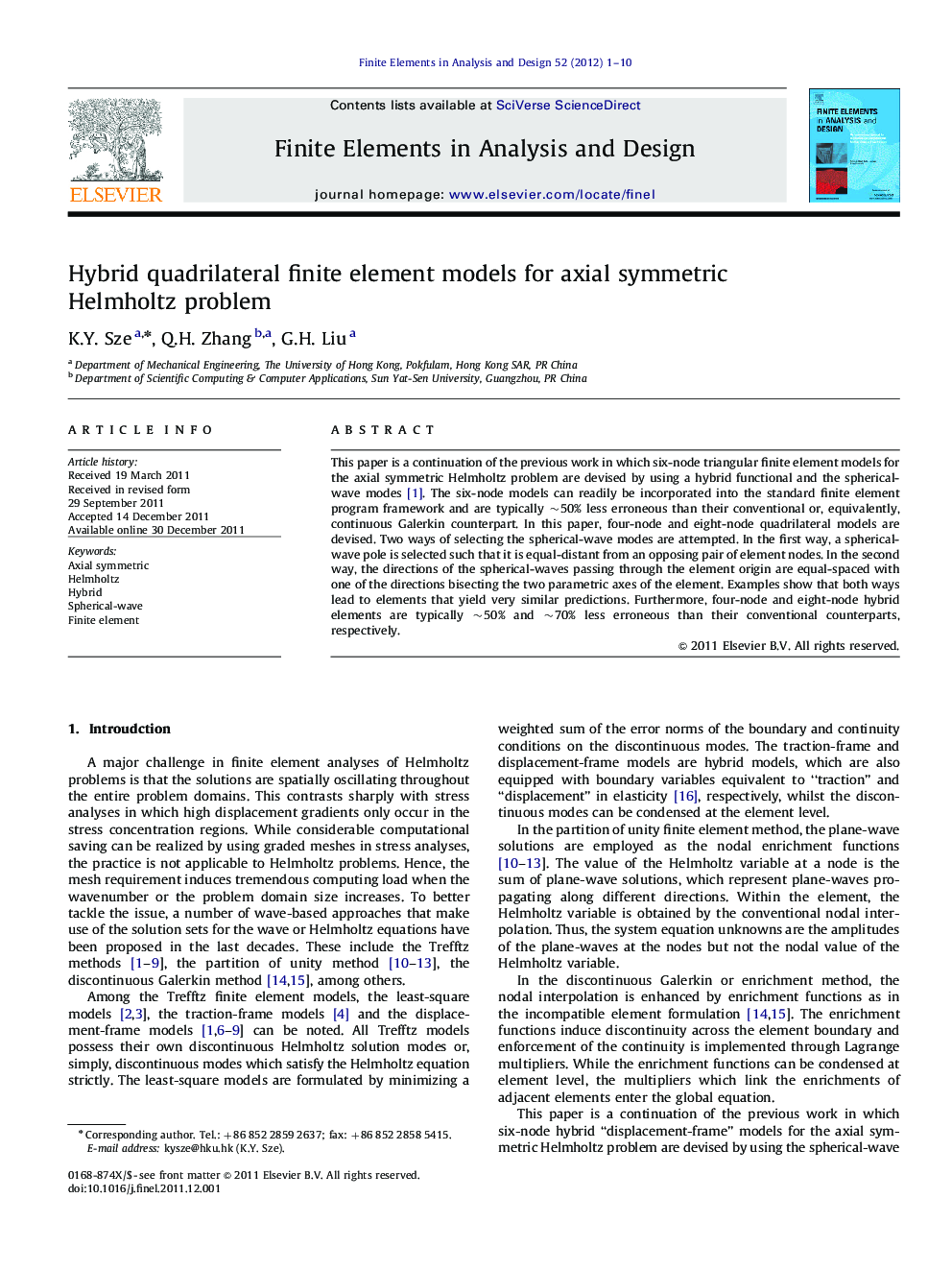| Article ID | Journal | Published Year | Pages | File Type |
|---|---|---|---|---|
| 513972 | Finite Elements in Analysis and Design | 2012 | 10 Pages |
This paper is a continuation of the previous work in which six-node triangular finite element models for the axial symmetric Helmholtz problem are devised by using a hybrid functional and the spherical-wave modes [1]. The six-node models can readily be incorporated into the standard finite element program framework and are typically ∼50% less erroneous than their conventional or, equivalently, continuous Galerkin counterpart. In this paper, four-node and eight-node quadrilateral models are devised. Two ways of selecting the spherical-wave modes are attempted. In the first way, a spherical-wave pole is selected such that it is equal-distant from an opposing pair of element nodes. In the second way, the directions of the spherical-waves passing through the element origin are equal-spaced with one of the directions bisecting the two parametric axes of the element. Examples show that both ways lead to elements that yield very similar predictions. Furthermore, four-node and eight-node hybrid elements are typically ∼50% and ∼70% less erroneous than their conventional counterparts, respectively.
► Four-node and eight-node quadrilateral models for axial symmetric Helmholtz problem are devised. ► An hybrid variation functional including a continuous and discontinuous Helmholtz variables is employed. ► The discontinuous variable are approximated by spherical-wave modes.x
